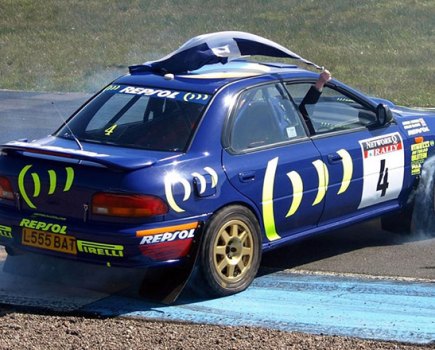It rather begs the question, are classic vehicles too dangerous? As the driver of a Citroën 2CV, a car regarded by many as being as safe as chewing live plug wires, it’s a question I often ask myself so I decided to investigate. Should I be concerned?
Let’s start with government figures. In 2013, road deaths dropped by two per cent to the lowest figures since records began in 1926, with 1713 killed. As traffic levels have risen somewhat since 1926, it seems modern safety equipment is probably responsible for the drop. After all, we all still see enough bad driving to know standards haven’t suddenly improved!
CONTENTIOUS – SEAT BELTS
Seat belts do save lives, yet many of us drive classic vehicles, built before 1964, that legally do not require them. You’re far less likely to be thrown from a vehicle if you’re wearing a belt, and one will hopefully stop you impacting the hard surfaces found in most classic vehicles in the event of an accident – or even just heavy, unexpected braking.
Personally, I have no problem with driving older vehicles. I’m very wary about driving vehicles with no fitted seat belts though. I have owned two vehicles without seat belts, and never felt entirely happy behind the wheel. There are companies that can fit seat belts to older vehicles, sometimes using parts that give a delightful, period look. That offers a greater amount of safety than an ‘it won’t happen to me’ attitude. I’ve certainly never taken issue with a pre-1964 car having seat belts fitted. It seems a sensible step.
Here are some key figures taken from the Road Safety Observatory website www.roadsafetyobervatory.com). Recent research found that seat belts are 50 per cent effective at preventing fatal injuries for drivers, 45 per cent effective at preventing serious injuries and 25 per cent effective at preventing minor injuries. For front seat passengers, seat belts are 45 per cent effective at preventing fatal injuries or serious injuries, and 20 per cent effective at preventing minor injuries.
Since January 31, 1983, it has been legal to wear a front seatbelt where fitted. That led to an instant 25 per cent drop in driver fatalities, and a 29 per cent drop in passenger fatalities. They really do work.
LESS PROTECTION
Kevin Clinton, head of road safety at the Royal Society for the Prevention of Accidents (RoSPA), told CCB: “The law does not require all classic cars to have seat belts fitted, but this means that drivers and passengers in these cars have much less protection if there is an accident.” Clinton adds: “If the car was originally manufactured without seat belts, and none have been retro-fitted, it is illegal to carry a child under three-years old in the car, and older children must only sit in the rear seats. If there are seat belts fitted, then child passengers must use an appropriate child car seat until they are either at least 135cm tall or 12 years old.”
But some prefer to keep things as they were. Richard Hughes of Young Gun Classics told CCB: “My 1953 Austin Somerset has never had seatbelts fitted. I probably do a lot more miles than most classic car owners, including regular motorway trips to and from university. Not having them doesn’t bother me too much, as I trust my driving skills enough to be able to avoid most potential hazards. Driving a car of this age in modern traffic is never going to be that safe anyway, so when I drive it I keep in mind that if I have a serious accident I’m probably not going to walk away.”
Similarly, I’m not going to stop using my 2CV. Yes, perhaps it is more dangerous than a modern car, but we accept the greater risks when we choose what vehicle to drive, which route to take (motorways are statistically the safest roads, urban roads the most likely to cause injury) or what to have for dinner (heart disease is still far more likely to kill you than a car crash).
MOTORSPORT RISKS
Motor racing is a world where risk and danger are always major themes. As well as the tragic event at Silverstone, a historic racer was killed at Donington in 2013. Often, historic racers lack more modern crash protection. But the question remains the same. Should safety be given a greater priority? Is it right to use older race vehicles in anger in full race conditions?
It’s a very hard call. How can you improve the safety of a historic car without destroying its nature? Cars are already safer than they were. Jim Clark never enjoyed the benefit of a roll cage in a Lotus Cortina, but now to race, you must have one. Similarly, overalls and crash helmets are period-incorrect, but much better at protecting the driver.
It gets more difficult with Formula 1 cars. The Lotus-Cosworth that Jim Clark was killed driving was similar in construction to the Lotus 18 which Denis Welch was racing at the Siverstone Classic (see page 12). By their very nature, these cars were little more than an engine and a seat, with lightweight tubes holding the cars together. It’s perhaps impossible to make one entirely safe without starting from a clean sheet of paper.
But it’s always so enjoyable to watch historic racers in action. Witness the rise of the classic racing events. Is that enjoyment putting drivers at unreasonable risk?
WHAT DO YOU THINK?
Is safety a concern? Do you take steps to make your classic safer? Is Historic Racing unsafe or is it an acceptable risk? Whatever your thoughts let us know below.





